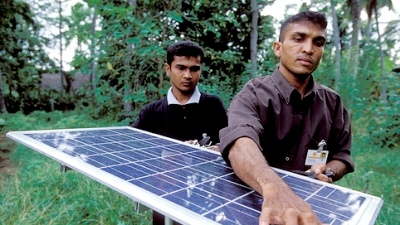High economic growth in South Asia has fueled an insatiable thirst for energy. Rising energy demand is driven by urbanization, industrialization, and prosperity, all of which are part of a broader process of development that is lifting millions of South Asians out of poverty. However, increased energy consumption has been accompanied by rising greenhouse gas emissions. On average, emissions have risen at about 3.3% annually in the region since 1990 – more rapidly than in any other region except the Middle East. However, per capita emissions of the region are still extremely low by international standards – less than one-fifth of the developed countries.
A new study, “Assessing the Investment Climate for Climate Investments: A Comparative Clean Energy Framework for South Asia in a Global Context,” was designed to evaluate the environment for private sector investment in climate mitigation or low-carbon technologies. A regulatory survey of six South Asian countries — India, Pakistan, Bangladesh, Nepal, Sri Lanka, and the Maldives — was undertaken to evaluate the presence of important enabling policies, regulations, incentives, and institutions, providing a snapshot of how each country fared in terms of the preconditions necessary for attracting climate-friendly investments. A broader comparison of South Asian economies with other emerging economies and developed regions was also undertaken, leading to the pilot construction of a “Climate Investment Readiness Index (CIRI).”
“The private sector clearly has to play an important role if we are to make the kind of clean energy transition needed to achieve our climate change goals. Governments have to play a catalytic role by creating the enabling environment to attract private investments in these sectors,” said Muthukumara Mani, a senior environmental economist with the World Bank, and the author of the report.
Many South Asian countries have started to incorporate elements of low-carbon growth in their economic strategies, in large part due to the potential synergies with other development objectives, including energy access, energy diversification and enhanced service delivery in urban services, sustainable urban transport and reduced air pollution.
The key study findings suggest that the impact of these frameworks on clean energy investments has been mixed. Renewable energy and energy efficiency frameworks in South Asia are relatively new, and are expected to evolve and develop further. India shows a greater degree of sophistication as compared to its neighbors, and India’s 2003 Electricity Act can be strongly correlated with specific increases in private sector investment inflows. In other countries, the policies, regulations, incentives, and institutional capacities are at early stages of development.

